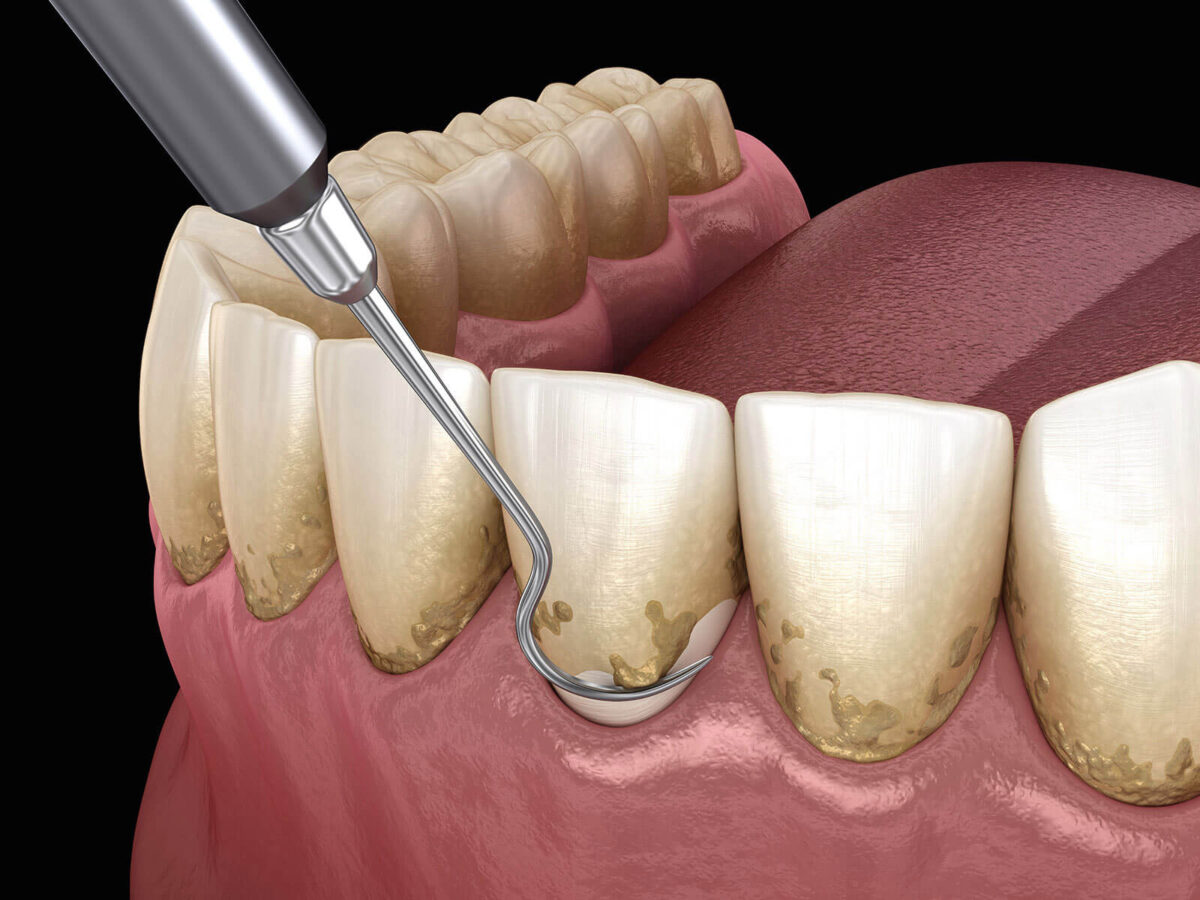Gum disease, or periodontal disease, is a prevalent yet treatable disorder affecting the tissues surrounding the teeth. Scaling and root planing is a non-surgical technique used to treat and prevent the advancement of gum disease by removing plaque and tartar from the tooth surfaces and roots. In this detailed guide, we will look at the necessity of scaling and root planing to prevent gum disease, how the technique works, and its benefits to oral health.
Understanding Gum Disease:
Gum disease is an inflammatory disorder that affects the gums and, if left untreated, can lead to significant problems such as loss of oral health and tooth loss. The collection of plaque—a sticky film of germs on the teeth and gums—is the primary cause of gum disease. Plaque buildup can result in tartar formation, contributing to gum inflammation and infection.
The Importance of Scaling and Root Planing:
1. Plaque Removal and Tartar Buildup Removal:
Importance: Scaling and root planing are excellent at removing plaque and tartar from tooth surfaces and roots.
Gum Disease Prevention: By removing these toxic deposits, the operation helps prevent the progression of gum disease. Regular dental cleanings may not be enough to remove tartar that has accumulated below the gumline.
2. Treatment of Early Gum Disease (Gingivitis):
Importance: Scaling and root planing are commonly used to treat early-stage gum disease.
Gingivitis Reversal: The technique helps to reverse gingivitis by lowering inflammation and facilitating healing. Treating gingivitis as soon as possible is critical to prevent it from progressing to more severe gum disease.
3. Promotion of Healing and Attachment:
Importance: Scaling and root planing smooth the surfaces of the tooth roots, promoting gum reattachment to the teeth.
Pocket Formation: By removing abnormalities on the dental roots, the technique inhibits the formation of deep pockets between the teeth and gums, where germs can proliferate.
4. Stopping Disease advancement:
Importance: Scaling and root planing stop the advancement of gum disease by targeting the underlying cause—bacterial infection and inflammation.
Complication Prevention: By halting the disease, the operation helps to avoid complications, including bone loss and tooth mobility.
5. Reduction of Gum Bleeding and Inflammation:
Importance: Removing plaque and tartar lowers gum bleeding and inflammation, two frequent symptoms of gum disease.
Oral Health Improvement: Scaling and root planing help enhance oral health by restoring gum health and preventing additional damage.
6. Prevention of Systemic Health Conditions:
Importance: Gum disease has been linked to various systemic health conditions, including cardiovascular disease and diabetes.
Individuals contribute to their general health and well-being by preventing and managing gum disease through dental scaling and root planing procedures.
How Scaling and Root Planing Work:
a. Assessment and Diagnosis:
The process begins with a complete assessment and diagnosis. The dentist or dental hygienist checks the teeth and gums, measures pocket depths, and uses diagnostic techniques such as X-rays to diagnose the amount of gum disease.
b. Local Anaesthesia:
Local anesthesia can ensure the patient’s comfort throughout the surgery. It is especially common during scaling and root planning procedures that are more thorough.
c. Scaling:
During scaling, the dental expert utilizes specialized tools to remove plaque and tartar from the tooth surfaces above and below the gum line. This procedure removes the bacterial accumulation that causes gum disease.
d. Root Planning:
Root planing entails polishing the surfaces of the dental roots to remove any leftover germs and poisons. This phase promotes healing and helps to avoid the return of gum disease.
e. Antimicrobial Agents (if required):
In some circumstances, antimicrobial agents may be used in the treated areas to limit bacterial activity further and maintain a healthy oral environment.
f. Follow-up Care:
It is critical to monitor the healing process and assess the success of the treatment. Maintenance cleanings and frequent dental check-ups are recommended to avoid the recurrence of gum disease.
Conclusion:
Scaling and root planning effectively prevent and treat gum disease. This non-surgical therapy is critical in maintaining dental health, minimizing complications, and safeguarding overall well-being because it addresses the root cause of the issue and promotes recovery. Regular dental check-ups, professional cleanings, and a commitment to good oral hygiene all contribute to the success of scaling and root planning in sustaining a healthy smile for years to come.


